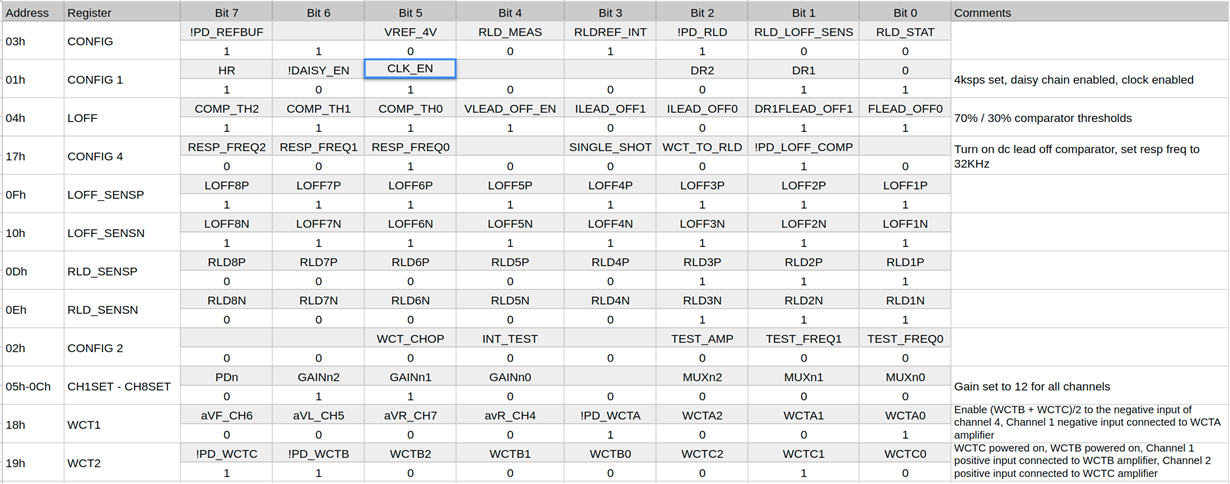Other Parts Discussed in Thread: ADS1294R, , ADS1294
Hi,
We are working on a 12-Lead ECG + Resp design using the ADS1298 and ADS1294R parts. We have them connected up in Daisy chain mode, with the Master in the chain being the ADS1298.
ADS1298 is set up as the master clock generator, CLKSEL = 1 and CLK_EN =1
ADS1294R is set up as the slave. CLKSEL=0
We are trying to use the RDATAC command to read data continuously from both devices. On a Logic analyzer we can see data from the first 8 channels, but in the remaining channels we get no data.
At startup we are setting the config registers to enable the respiration functions, but we are seeing no modulation clock coming from the ADS1294.
We are using the START Opcode to start conversion and synchronise the devices.
If we set !DAISY_EN! high we can read from both devices, and the modulation clock start operating, which I do not understand since multi-readback is not the correct mode to be in.
Is there something we are doing wrong? Is RDATAC supposed to work in Daisy-Chain mode? What is the correct state for !DAISY_EN!
Thanks for your support,
Dylan





